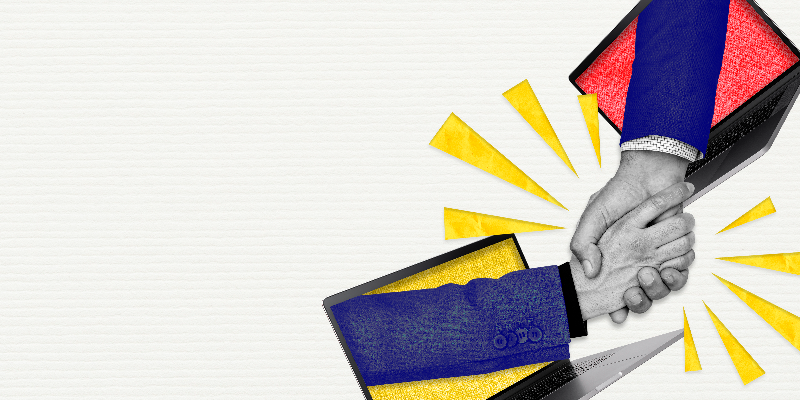

Many brands, or any advertising agency face increasingly pressing conundrum, in a time when attention is valuable: should they continue using traditional, tried-and-true advertising or completely switch to the quick-paced world of social media marketing?
Although each path has its own advantages, the situation has changed significantly. How companies interact with their audiences has changed as a result of consumer behavior, technology developments, and marketing analytics. What, then, is the most effective in the current market, when it comes to social media advertising vs traditional advertising? Let's examine each one's benefits, drawbacks, and strategic considerations to determine what contemporary brands actually require.
Print, radio, television, billboards, and direct mail are examples of traditional advertising channels and increased Facebook marketing agency. These techniques dominated the marketing industry for many years, and for good reason.
The capacity of traditional media to swiftly reach a large audience is one of its greatest advantages. A brand can reach millions of people with a single TV commercial during a significant event or a national newspaper spread. This widespread exposure frequently gives brands a feeling of legitimacy and status, which is more difficult to attain in the crowded field of digital advertisements.
Physical mail, billboards, and print advertisements all establish a sensory connection. Seeing an eye-catching billboard or holding a magazine ad can provide a more memorable brand experience than a brief Instagram story.
Despite its advantages, traditional advertising is not as accurate or flexible as digital platforms. Measuring precise ROI is difficult, and targeting particular demographics is limited. Instead of using real-time engagement metrics, brands frequently rely on estimates based on audience size.
When it comes to advertising on social media vs traditional, social media has changed the marketing playbook in addition to upending traditional advertising. Social media sites like Facebook, Instagram, TikTok, LinkedIn, and X (formerly Twitter) have become vital resources for companies trying to communicate with customers directly.
Social media's capacity to target particular audiences is among its most potent benefits. Marketers can target consumers based on a variety of factors, including age, location, hobbies, and purchasing patterns. By guaranteeing that advertisements are displayed to the appropriate individuals at the appropriate moment, this degree of personalization raises conversion rates and lowers wasteful ad spending.
In traditional advertising vs social media, one-way communication becomes two-way thanks to social media unlike traditional advertising. Customers have the ability to message, share, like, and comment on brands. By encouraging community and loyalty, this interaction enables brands to establish connections rather than merely disseminate messages.
Real-time tracking is possible for each like, click, and conversion. Traditional advertising cannot match the immediacy of these insights, which help marketers improve performance over time, allocate budgets more efficiently, and continuously refine their strategies.

It can be expensive to run a TV commercial, print magazine ads, or buy a prominent billboard space. Media purchases and production expenses can easily push a campaign into the six or seven figure range. Large companies may be able to handle this, but smaller brands frequently find it prohibitively expensive.
In the topic of social media advertising vs traditional advertising, brands can start small on social media and grow according to performance. Depending on the budget, influencer partnerships can range from micro-influencers to celebrity endorsements, and a Facebook ad can cost as little as $5 per day. Because of its adaptability, social media is now more accessible to small businesses and startups who want to experiment before fully committing.
Many consumers still believe that traditional media is more reliable, even in the face of digital advancements. Credibility is frequently linked to print, radio, and television, particularly among older audiences who might be dubious of influencer or digital advertising.
Authenticity is in high demand among younger audiences, which makes online platforms grow when you think of traditional advertising vs social media. Honest reviews, behind-the-scenes videos, and user-generated content are more resonant than well-produced TV commercials. When carefully selected, influencers can humanize a brand and increase its relatability. On the other hand, audiences may react negatively if they perceive paid advertisements that lack transparency or inauthenticity.

Conventional campaigns can take weeks or months to launch, from production to distribution. After it goes live, it is either impossible or very expensive to make changes in the topic of advertising on social media vs traditional. In a rapidly changing cultural environment where trends change daily, this delay may be detrimental.
Social media provides flexibility and speed. Almost instantly, brands can respond to news, trends, and customer feedback. Social media platforms are perfect for campaigns that depend on humor, pop culture, or time-sensitive promotions because of their agility.
Coca-Cola has a long history of dominating traditional advertising; its holiday television commercials are well-known. For global reach and brand positioning, the company keeps spending money on conventional channels. It's a prime illustration of how to preserve legacy status through traditional media.
Conversely, Glossier, a beauty brand, largely relied on social media to build its empire. Glossier has shown how digital-first tactics can upend established industries by utilizing user-generated content, micro-influencers, and a robust community presence.
Social media advertising vs traditional advertising, the most prosperous contemporary brands are combining both, rather than picking just one. A multichannel strategy maintains direct, individualized connections while guaranteeing broad reach.
Maintaining a consistent tone, appearance, and message is essential whether a brand is featured in a magazine or on a TikTok feed. Integration means adapting the content to the platform while maintaining the brand identity; it does not imply duplication.
Clear KPIs must be established by brands for every channel. Social media can increase engagement and conversions, but traditional media may be better for brand awareness. Marketers can more effectively distribute funds and resources if they are aware of each one's distinct advantages.
There isn't a single, universal solution. The best course of action is dependent upon:
Luxury and heritage brands might gain more from traditional channels, but startups and direct-to-consumer brands might flourish on social media. Combining the two is often where the magic happens.
Social media and traditional advertising are two different tools in a modern marketer's toolbox, not rivals. Traditional advertising provides scale, credibility, and wide reach, while social media is superior in targeting, agility, and engagement. Astute brands know how to strike a balance between the two, utilizing each to its full potential.
It's not about old versus new in the end. It all comes down to selecting the ideal combination for your audience, message, and time.
Bud an expert social media marketing company in Bangalore, specializing in creating impactful digital strategies that drive brand growth. As a trusted influencer marketing agency in Bangalore, we connect brands with the right influencers to deliver authentic engagement! Connect with us today!